Propeller Cavitation in Non-Uniform Flow and Correlation with the Near Pressure Field †
Abstract
:1. Introduction
2. Experimental Setup
2.1. Facility and Propeller
2.2. Wake Generator
2.3. Flow Conditions
3. High-Speed Visualizations and Pattern Measurement
4. Pressure Measurements
4.1. Instrumentation
4.2. Harmonic Analysis of Pressure Data
5. Results and Discussion
5.1. Cavitation Pattern
5.2. Pressure Field
6. Correlations between Cavitation and Pressure Field
6.1. Time Correlations
6.2. Pressure from Vapor Volume
7. Conclusions
Acknowledgments
Author Contributions
Conflicts of Interest
Appendix A. Nomenclature
| Symbol | Description | Units |
| R | Propeller radius | |
| D | Propeller diameter, | |
| Upstream axial inflow velocity | ||
| n | Propeller rotation frequency | |
| Pressure at propeller axis | ||
| Vapor pressure | ||
| Water density | ||
| Cavitation number referred to , | - | |
| Angular position | ||
| Blade area for | ||
| Cavity extension | ||
| Cavity characteristic length, | ||
| Cavity volume | ||
| J | Advance coefficient, | - |
| T | Thrust | |
| Thrust coefficient, | - | |
| , | Amplitude and phase of the Fourier series | , |
| Fundamental frequency | ||
| BPF | Blade passage frequency |
Appendix B. Cavitation Extension Measurement
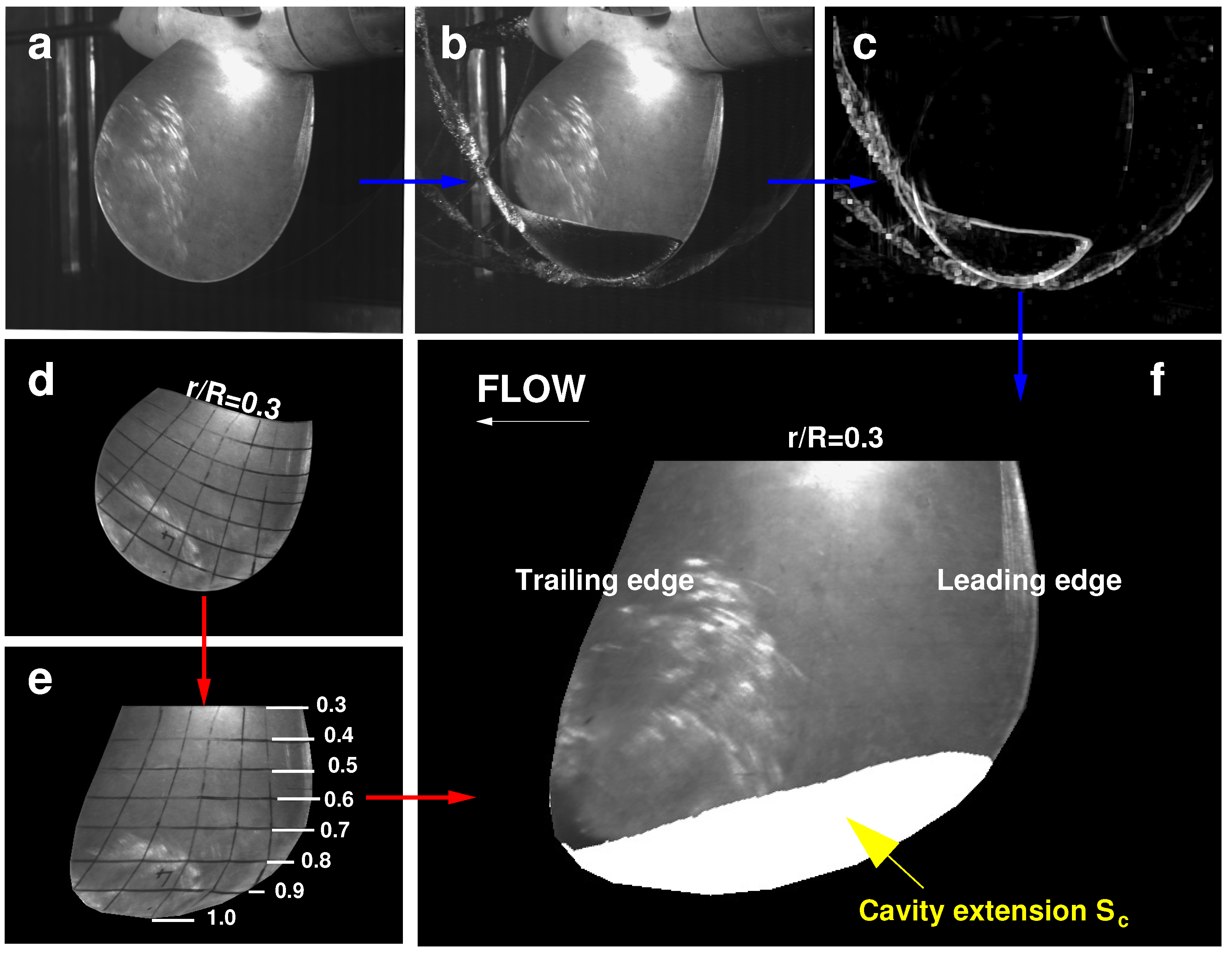
References
- Pereira, F.; Salvatore, F.; Di Felice, F. Measurement and Modelling of Propeller Cavitation in Uniform Inflow. J. Fluids Eng. 2004, 126, 671–679. [Google Scholar] [CrossRef]
- Ito, T. An Experimental Investigation into the Unsteady Cavitation of Marine Propellers. Rep. Ship Res. Instit. 1966, 11, 1–18. [Google Scholar]
- Takahashi, H.; Ueda, T. An Experimental Investigation into the Effect of Cavitation on Fluctuating Pressure around a Marine Propeller. In Proceedings of the Twelfth International Towing Tank Conference (ITTC), Rome, Italy, 22–30 September 1969; National Academy Press: Washington, DC, USA, 1969; pp. 315–317. [Google Scholar]
- Huse, E. Pressure Fluctuations on the Hull Induced by Cavitating Propellers; Technical Report 111, Norwegian Ship Model Experiment Tank; Trondheim University: Trondheim, Norway, 1972. [Google Scholar]
- Dyne, G. A Study of the Scale Effect On Wake, Propeller Cavitation, and Vibratory Pressure at Hull of Two Tanker Models; No. 00071643; Society of Naval Architects and Marine Engineers: Jersey City, NY, USA, 1974. [Google Scholar]
- Bark, G.; Berlekom, W.B. Experimental Investigations of Cavitation Dynamics and Cavitation Noise. In Proceedings of the Twelfth Symposium on Naval Hydrodynamics, Washington, DC, USA, 5–9 June 1978; Statens Skeppsprovningsanstalt: Göteborg, Sweden, 1978; pp. 470–493. [Google Scholar]
- Matusiak, J. Broadband Noise of the Cavitating Marine Propellers: Generation and Collapse of the Free Bubbles Downstream of the Fixed Cavitation. In Proceedings of the Nineteenth Symposium on Naval Hydrodynamics, Seoul, Korea, 23–28 August 1992; National Academy Press: Washington, DC, USA, 1992; pp. 701–712. [Google Scholar]
- Johnsson, C.A.; Rutgersson, O.; Olsson, S.; Björheden, O. Vibration Excitation Forces From a Cavitating Propeller. Model and Full Scale Tests on a High Speed Container Ship. In Proceedings of the Eleventh Symposium on Naval Hydrodynamics, London, UK, 28 March–2 April 1976; National Academy Press: Washington, DC, USA, 1976; Volume 8, pp. 43–74. [Google Scholar]
- Chiba, N.; Sasajima, T.; Hoshino, T. Prediction of Propeller-Induced Fluctuating Pressures and Correlation with Full Scale Data. In Proceedings of the Thirteenth Symposium on Naval Hydrodynamics, Tokyo, Japan, 6–10 October 1980; National Academies Press: Washington, DC, USA, 1981; pp. 89–103. [Google Scholar]
- Breslin, J.P.; van Houten, R.J.; Kerwin, J.E.; Johnsson, C.A. Theoretical and Experimental Propeller-Induced Hull Pressures Arising from Intermittent Blade Cavitation, Loading, and Thickness. SNAME Trans. 1982, 90, 111–151. [Google Scholar]
- Kurobe, Y.; Ukon, Y.; Koyama, K.; Makino, M. Measurement of Cavity Volume and Pressure Fluctuation on a Model of the Training Ship “SEIUN MARU” with Reference to Full Scale Measurement. Rep. Ship Res. Instit. 1983, 20, 395–429. [Google Scholar]
- Friesch, J.; Johannsen, C.; Payer, H.G. Correlation Studies on Propeller Cavitation Making Use of a Large Cavitation Tunnel. SNAME Trans. 1992, 100, 65–92. [Google Scholar]
- Friesch, J. Correlation Investigations for Higher Order Pressure Fluctuations and Noise for Ship Propellers. In Proceedings of the Third International Symposium on Cavitation, Grenoble, France, 7–10 April 1998; Michel, J.M., Kato, H., Eds.; Université Joseph Fourier: Grenoble, France, 1998; pp. 259–265. [Google Scholar]
- Johannsen, C. Investigation of Propeller-Induced Pressure Pulses by Means of High-Speed Video Recording in the Three-Dimensional Wake of a Complete Ship Model. In Proceedings of the Twenty-Second Symposium on Naval Hydrodynamics, Washington, DC, USA, 9–14 August 1998; National Academy Press: Washington, DC, USA, 1998; pp. 314–329. [Google Scholar]
- Konno, A.; Wakabayashi, K.; Yamaguchi, H.; Maeda, M.; Ishii, N.; Soejima, S.; Kimura, K. On the Mechanism of the Bursting Phenomena of Propeller Tip Vortex Cavitation. J. Mar. Sci. Technol. 2002, 6, 181–192. [Google Scholar] [CrossRef]
- Jung, J.; Lee, S.J.; Han, J.M. Study on Correlation Between Cavitation and Pressure Fluctuation Signal Using High-Speed Camera System. In Proceedings of the Seventh International Symposium on Cavitation, Ann Arbor, MI, USA, 16–20 August 2009; University of Michigan: Ann Arbor, MI, USA, 2009. [Google Scholar]
- Paik, B.G.; Kim, K.Y.; Lee, J.Y.; Lee, S.J. Analysis of Unstable Vortical Structure in a Propeller Wake Affected by a Simulated Hull Wake. Exp. Fluids 2010, 48, 1121–1133. [Google Scholar] [CrossRef]
- Berger, S.; Bauer, M.; Druckenbrod, M.; Abdel-Maksoud, M. Investigation of Scale Effects on Propeller-Induced Pressure Fluctuations by a Viscous/Inviscid Coupling Approach. In Proceedings of the Third International Symposium on Marine Propulsors, Tasmania, Australia, 5–8 May 2013; Binns, J., Brown, R., Bose, N., Eds.; Australian Maritime College, University of Tasmania: Launceston, Tasmania, Australia, 2013; pp. 209–217. [Google Scholar]
- Ji, B.; Luo, X.; Peng, X.; Wu, Y.; Xu, H. Numerical Analysis of Cavitation Evolution and Excited Pressure Fluctuation around a Propeller in Non-Uniform Wake. Int. J. Multiph. Flow 2012, 43, 13–21. [Google Scholar] [CrossRef]
- Ji, B.; Luo, X.; Wu, Y. Unsteady Cavitation Characteristics and Alleviation of Pressure Fluctuations around Marine Propellers with Different Skew Angles. J. Mech. Sci. Technol. 2014, 28, 1339–1348. [Google Scholar] [CrossRef]
- Cotroni, A.; Di Felice, F.; Romano, G.P.; Elefante, M. Investigation of the Near Wake of a Propeller Using Particle Image Velocimetry. Exp. Fluids 2000, 29, S227–S236. [Google Scholar] [CrossRef]
- Huse, E. Report of the Twenty-First ITTC Cavitation Committee; Trondheim (Norway); National Academy Press: Washington, DC, USA, 1996; Volume 1. [Google Scholar]
- Pereira, F.; Avellan, F.; Dupont, P. Prediction of Cavitation Erosion: An Energy Approach. J. Fluids Eng. 1998, 120, 719–727. [Google Scholar] [CrossRef]
- Pereira, F.; Salvatore, F.; Di Felice, F.; Elefante, M. Experimental and Numerical Investigation of the Cavitation Pattern on a Marine Propeller. In Proceedings of the Twenty-Fourth Symposium on Naval Hydrodynamics, Fukuoka, Japan, 8–12 July 2002; National Academies Press: Washington, DC, USA, 2002; Volume 3, pp. 236–251. [Google Scholar]
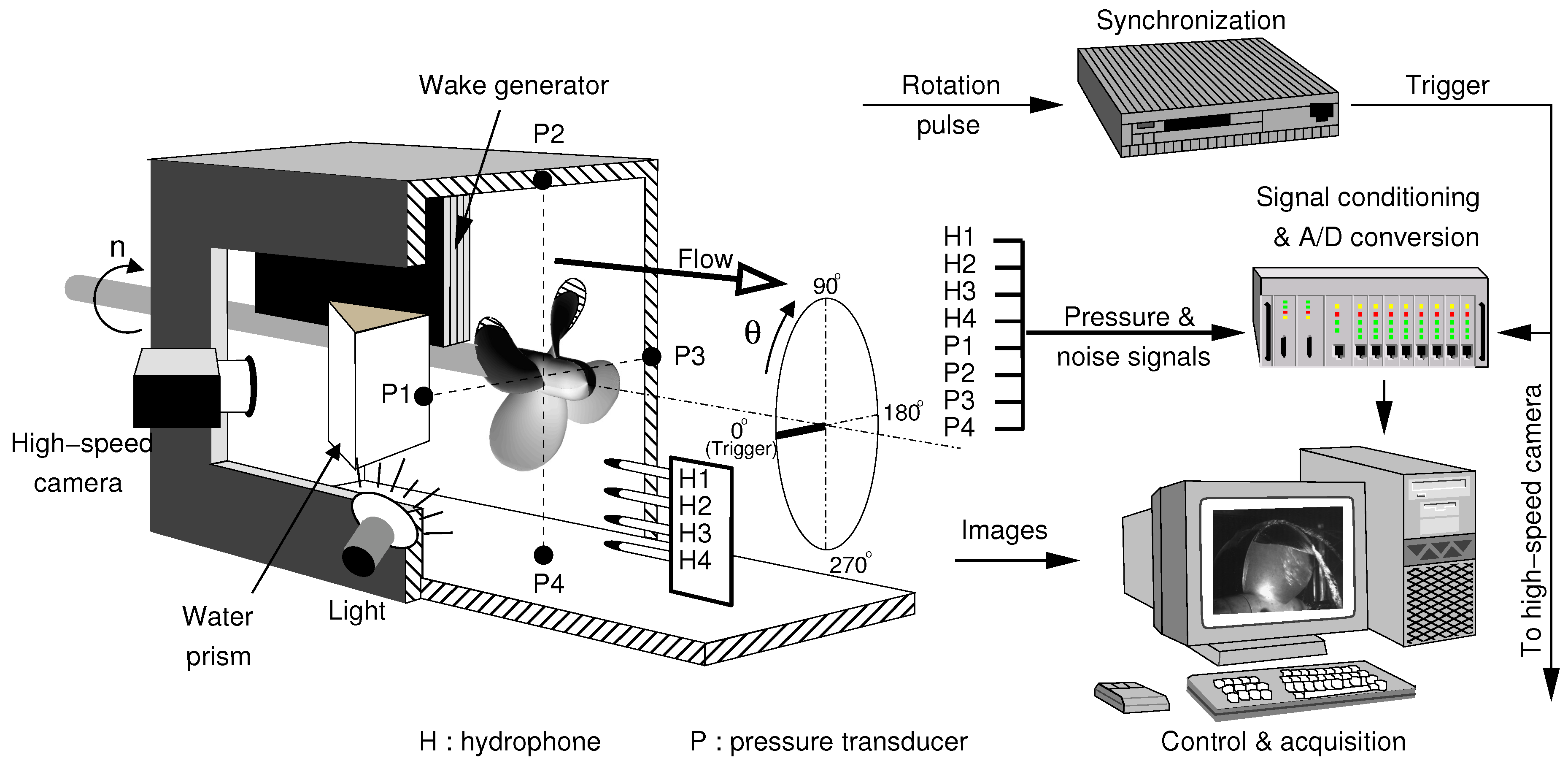
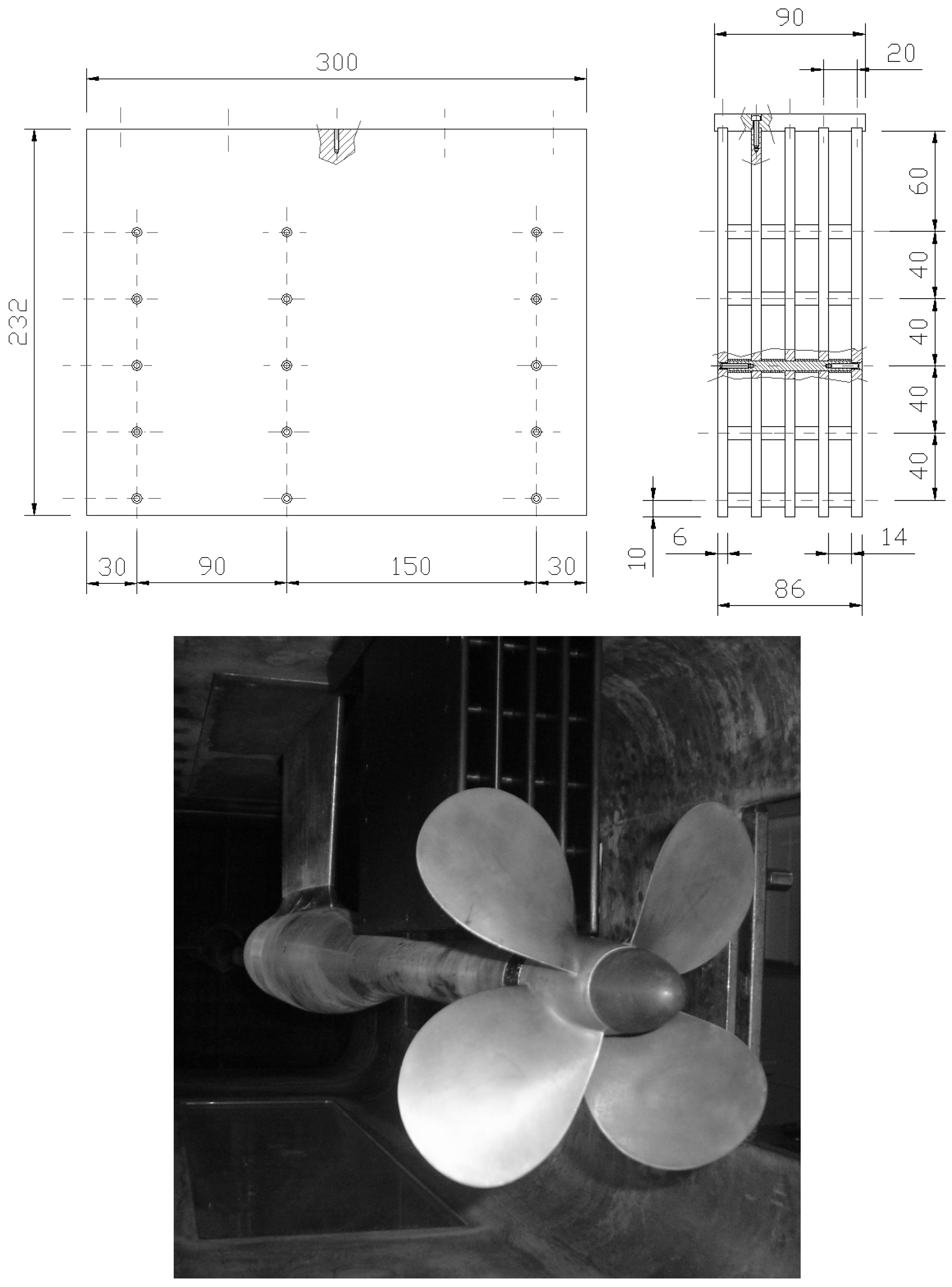
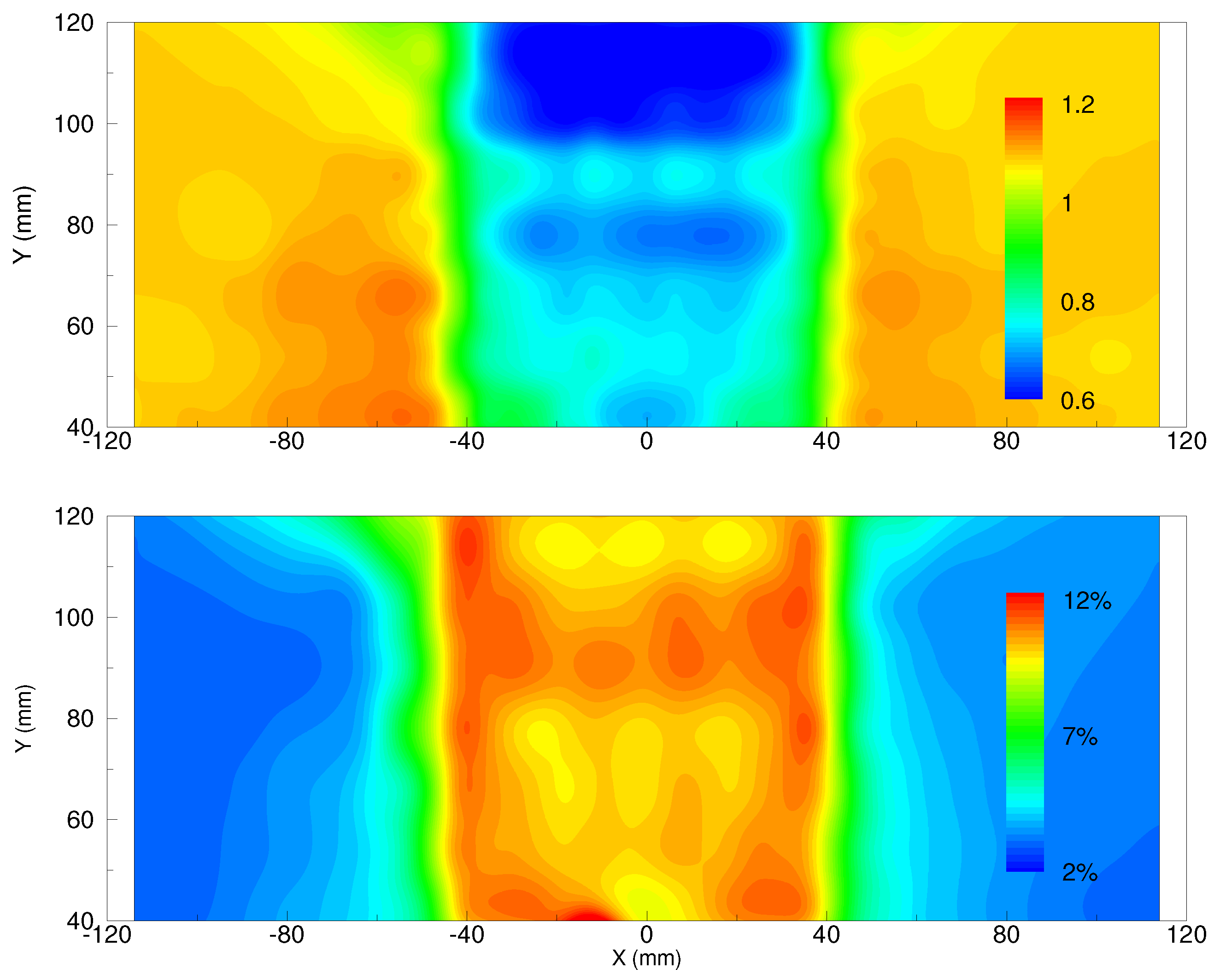
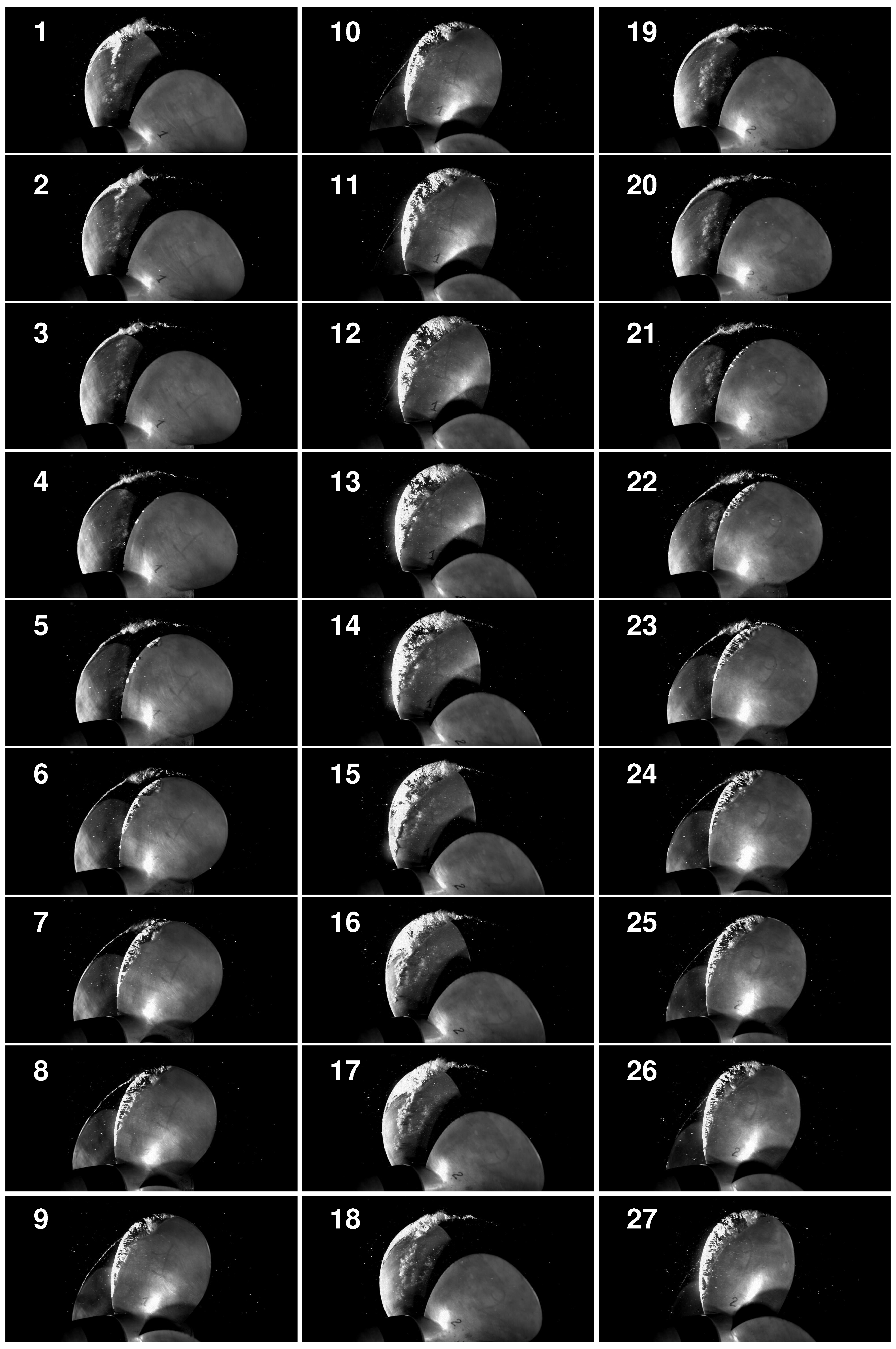
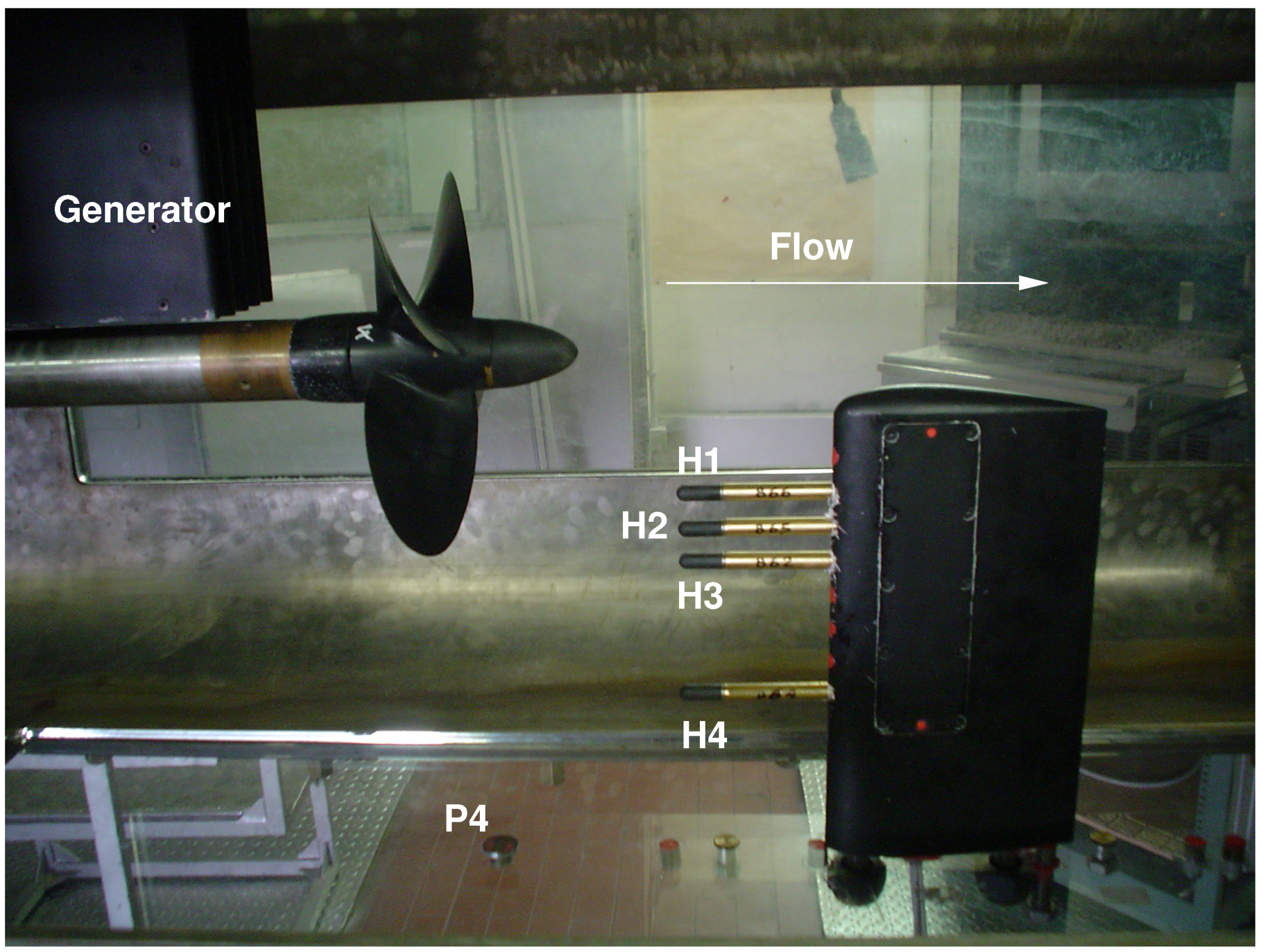
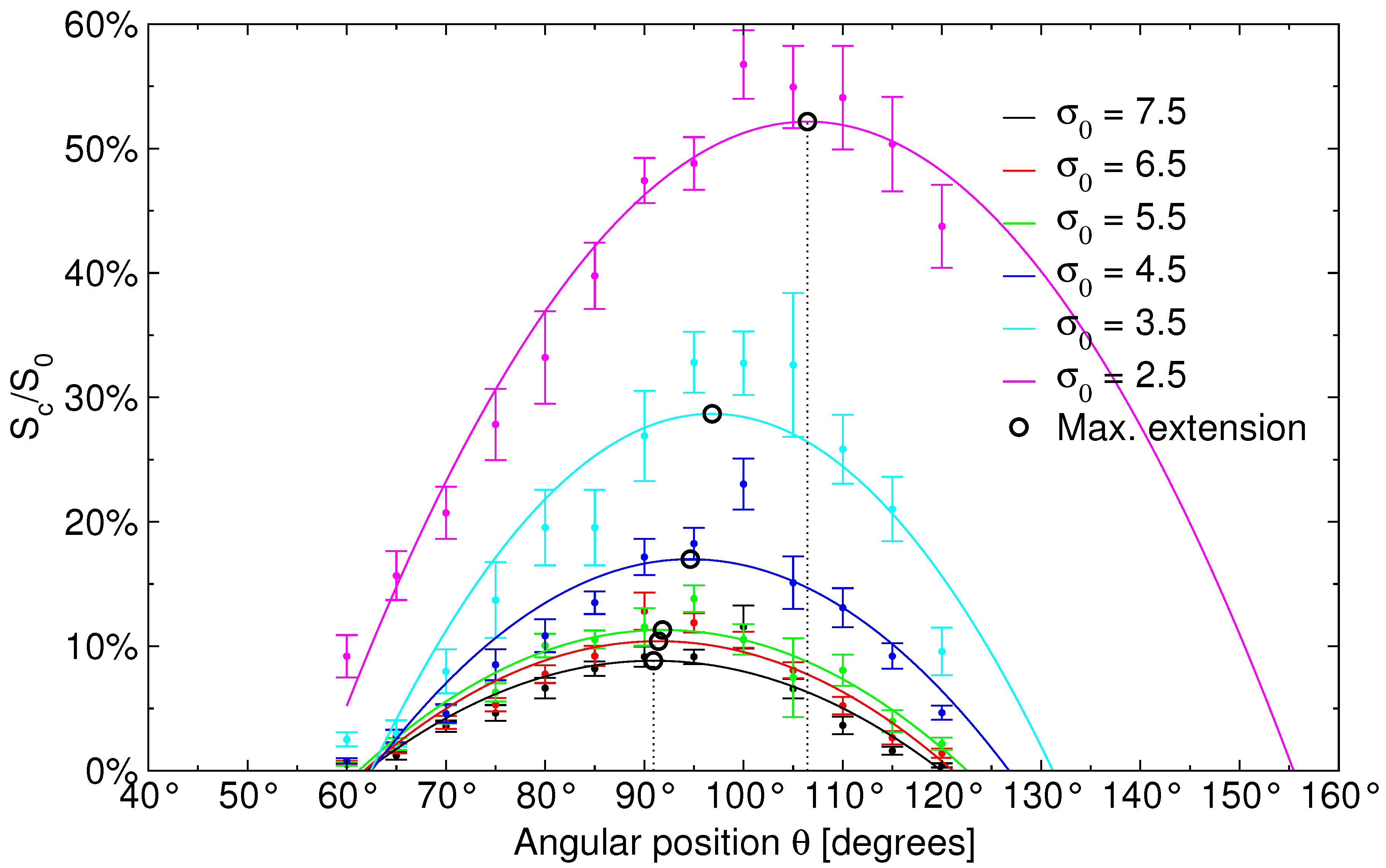
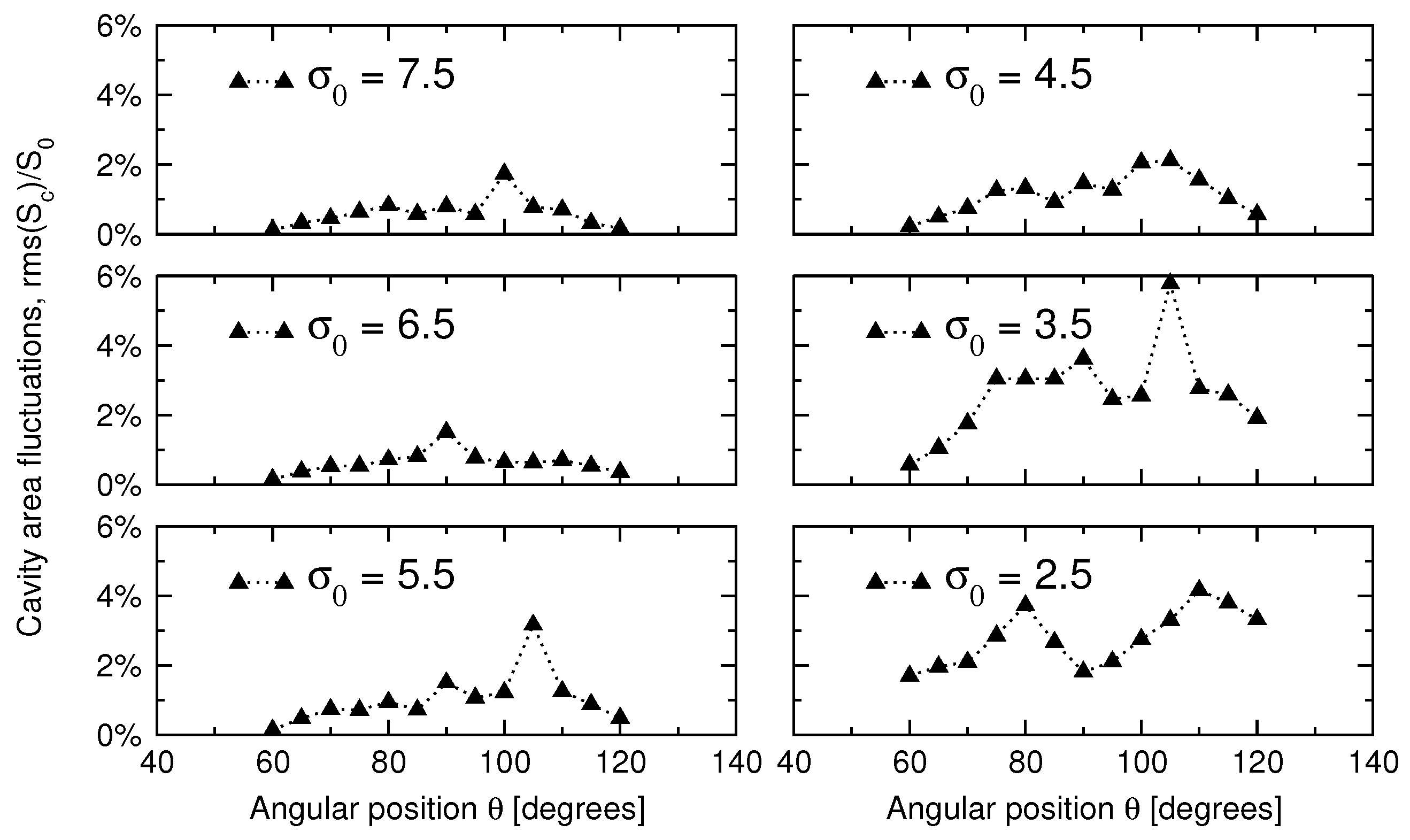
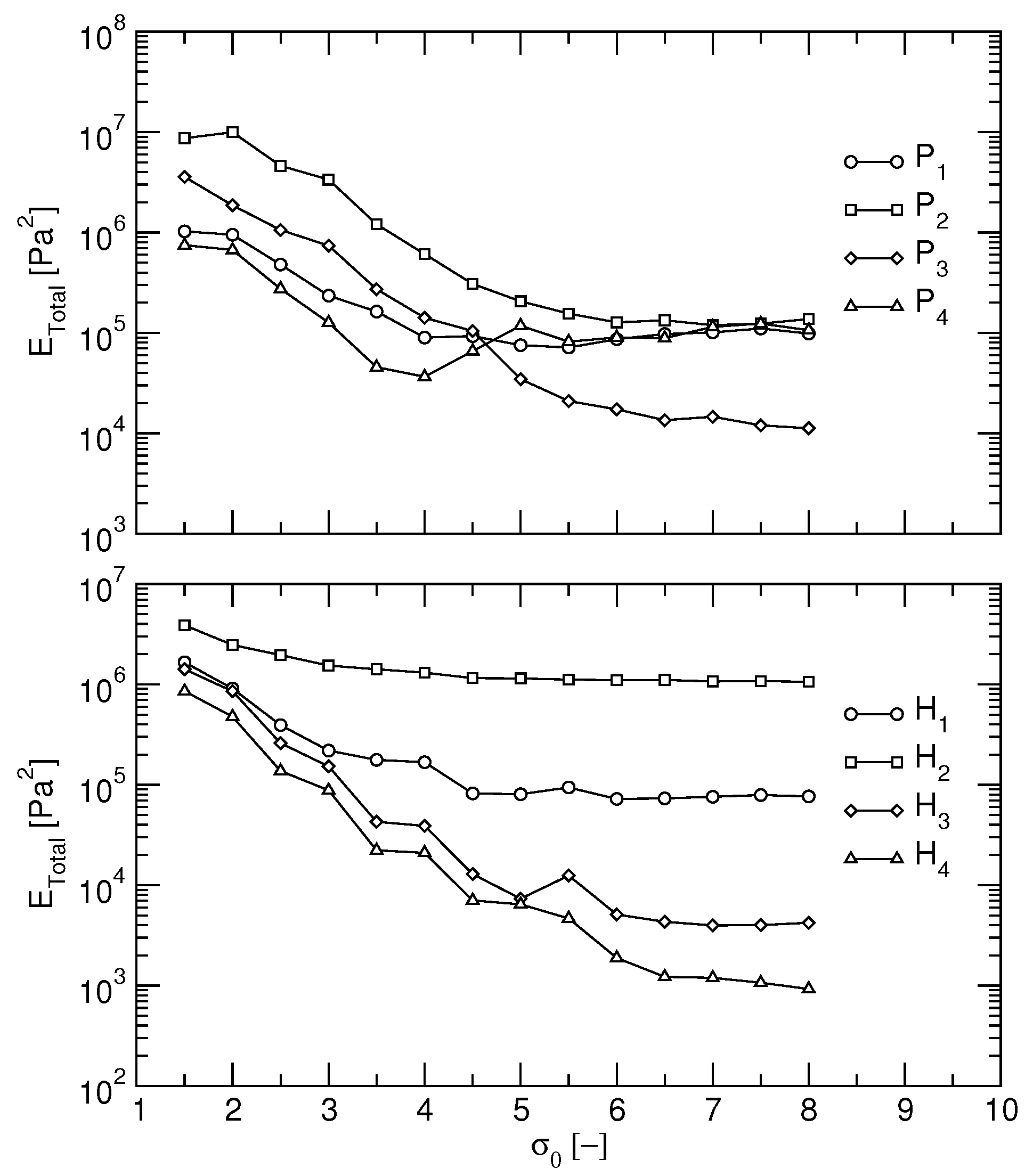
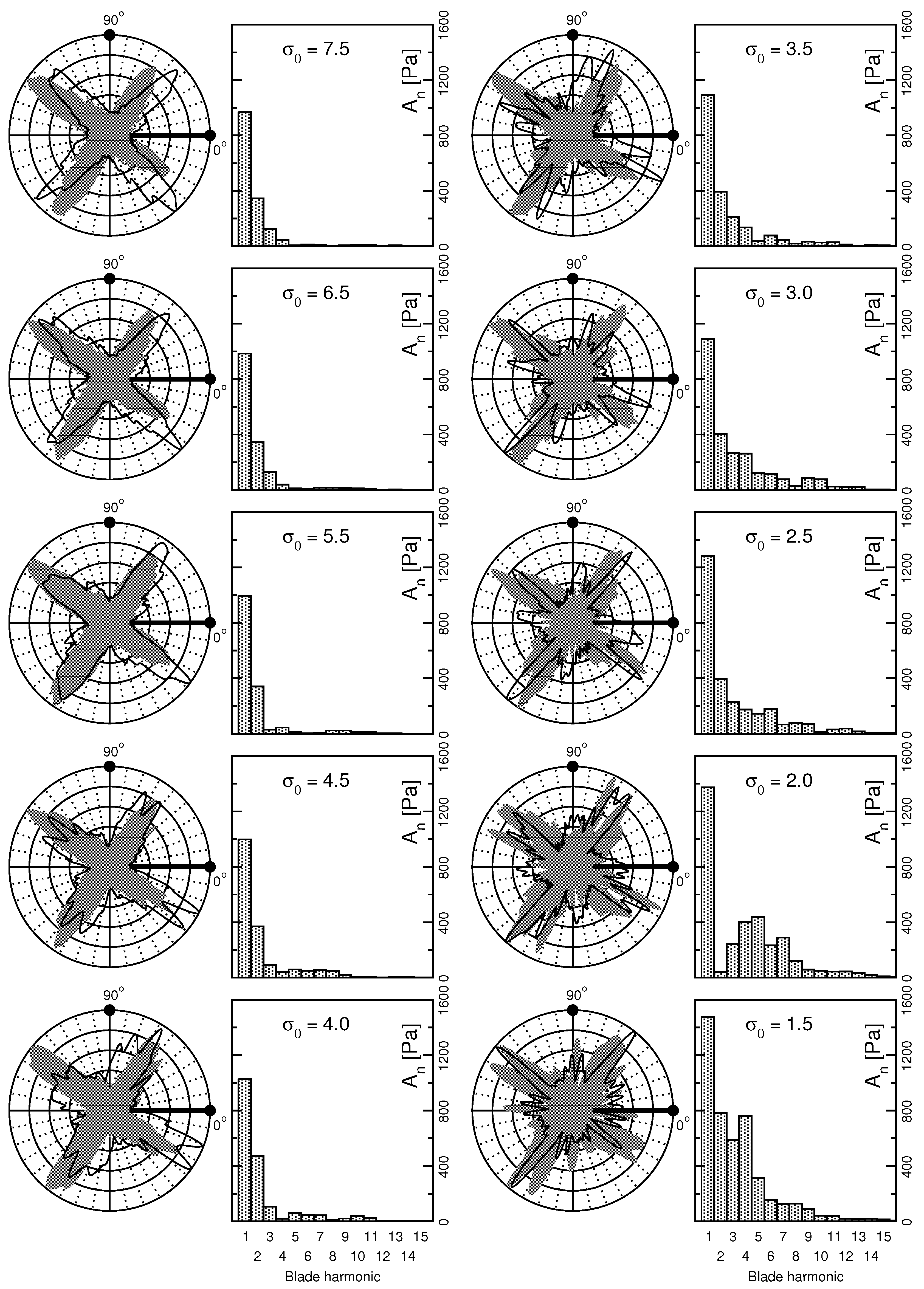

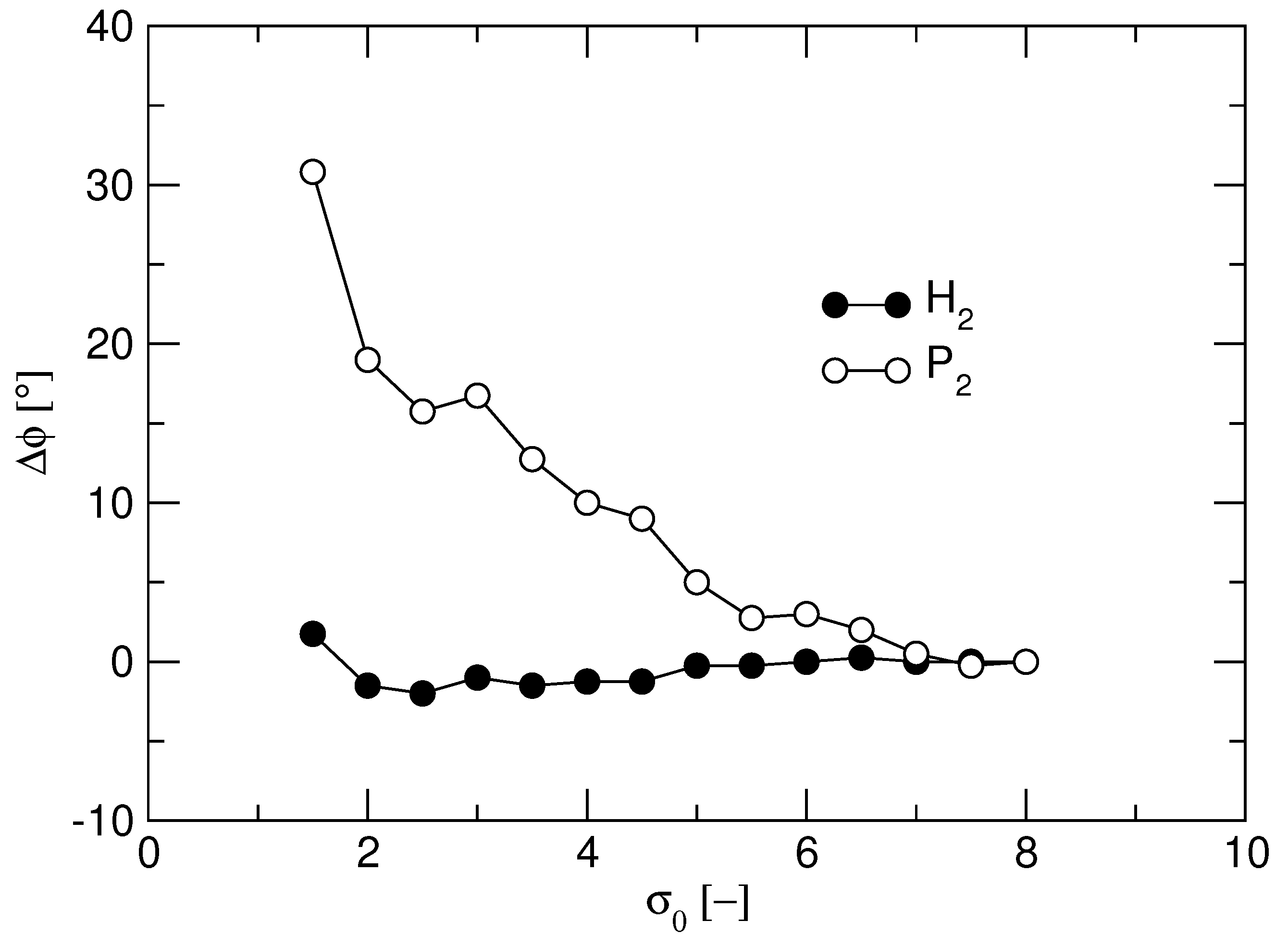
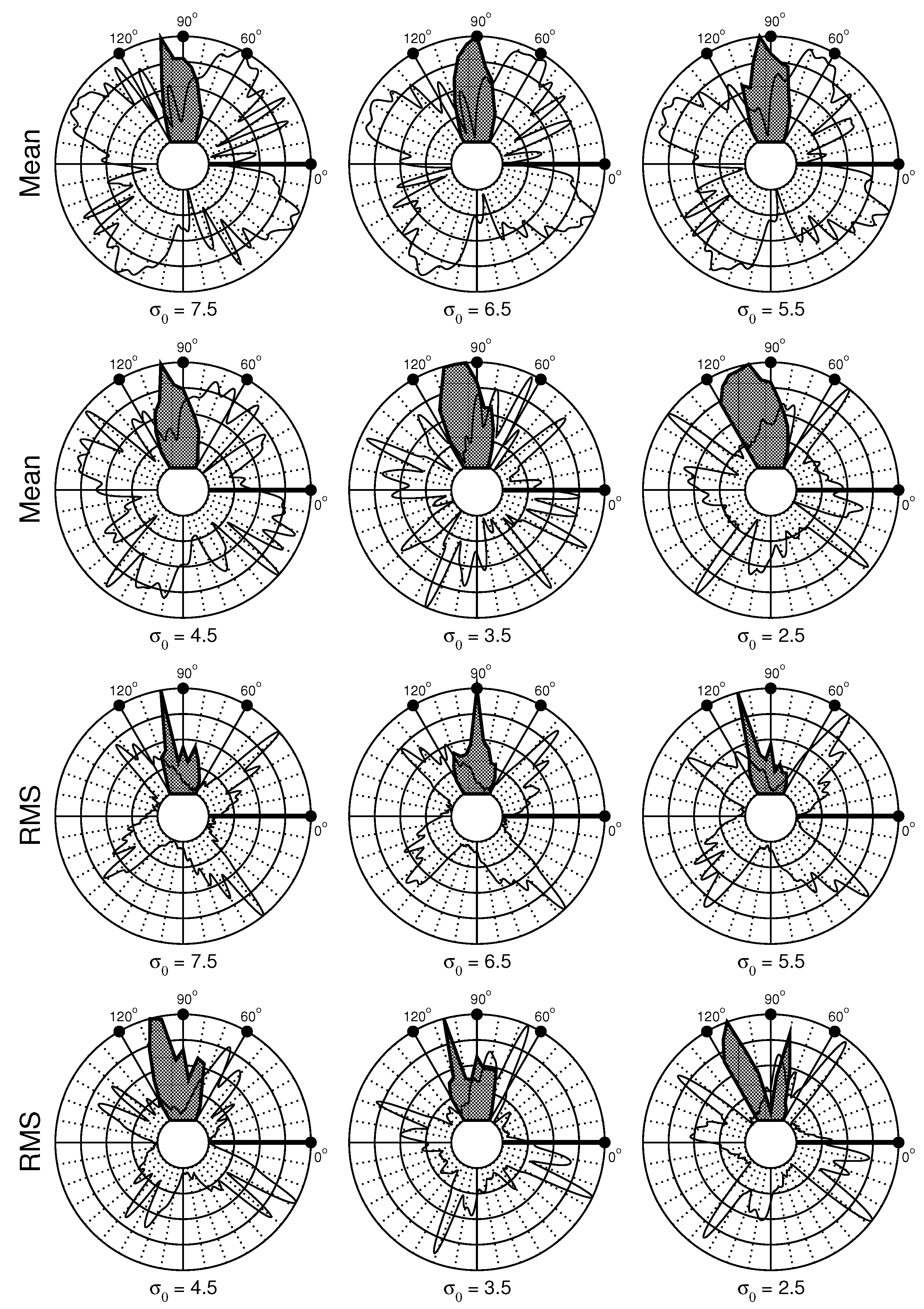

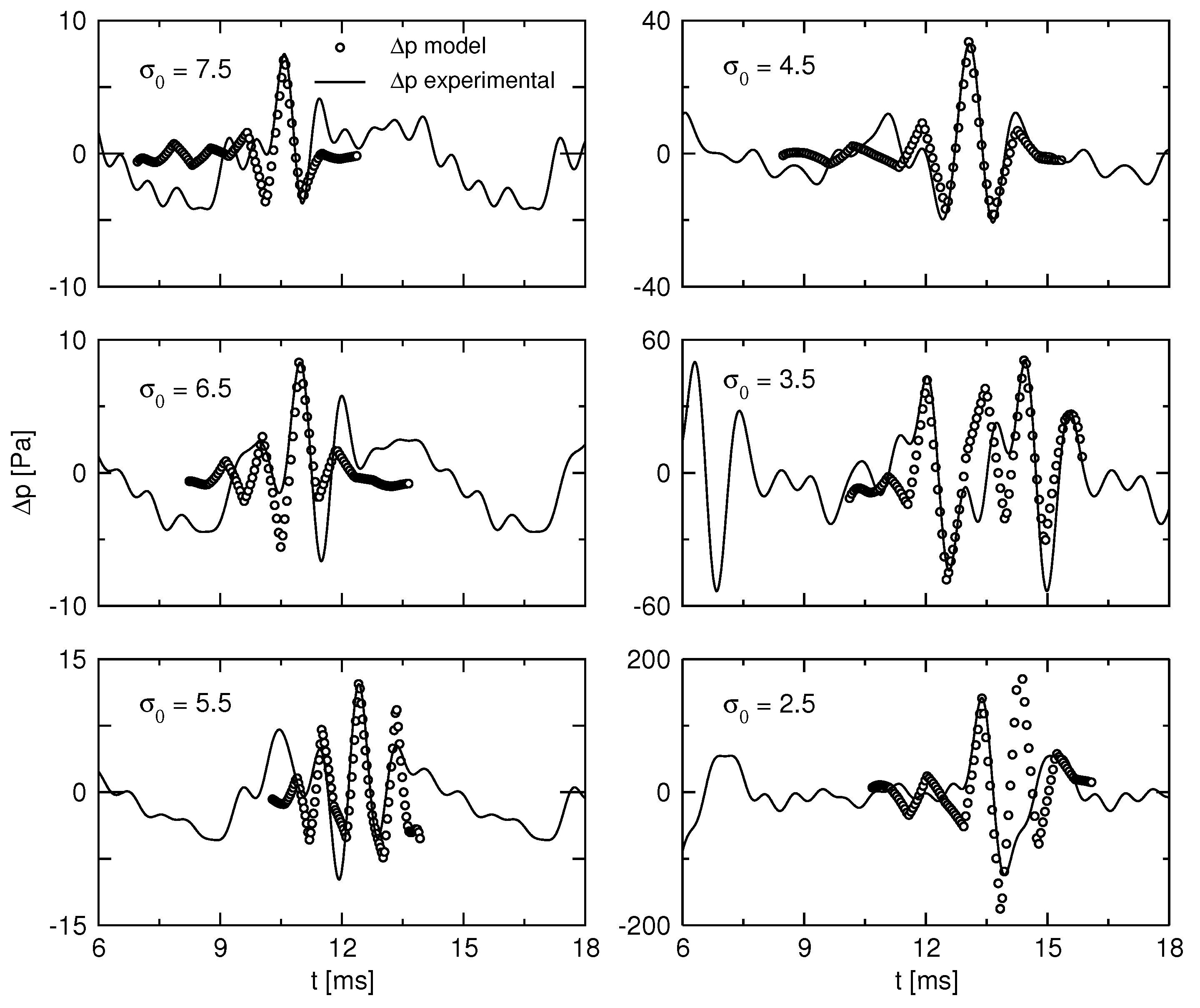
© 2016 by the authors; licensee MDPI, Basel, Switzerland. This article is an open access article distributed under the terms and conditions of the Creative Commons Attribution license ( http://creativecommons.org/licenses/by/4.0/).
Share and Cite
Alves Pereira, F.; Di Felice, F.; Salvatore, F. Propeller Cavitation in Non-Uniform Flow and Correlation with the Near Pressure Field. J. Mar. Sci. Eng. 2016, 4, 70. https://doi.org/10.3390/jmse4040070
Alves Pereira F, Di Felice F, Salvatore F. Propeller Cavitation in Non-Uniform Flow and Correlation with the Near Pressure Field. Journal of Marine Science and Engineering. 2016; 4(4):70. https://doi.org/10.3390/jmse4040070
Chicago/Turabian StyleAlves Pereira, Francisco, Fabio Di Felice, and Francesco Salvatore. 2016. "Propeller Cavitation in Non-Uniform Flow and Correlation with the Near Pressure Field" Journal of Marine Science and Engineering 4, no. 4: 70. https://doi.org/10.3390/jmse4040070





